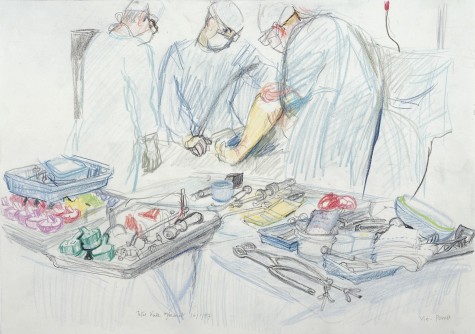
In 1974, the neurologist Oliver Sacks was hiking alone on a Norwegian mountain when, coming around a boulder, he stumbled upon a bull sprawled across the trail. The bull didn’t react, but Sacks, no stranger to hallucinations, somehow imagined the animal as “first a monster, and now the Devil.” As he fled downhill in a deluded panic, he slipped, dislocating his patella, tearing his quadriceps from the knee, and rendering his leg “limp and flail… [it] gave way beneath me like a piece of spaghetti.” Unable to walk, he nearly perished of exposure before kindly reindeer hunters discovered him and toted him down the mountain.
Though Sacks survived, the worst trial was yet to come. In the wake of knee surgery, he struggled to see his unresponsive, “sepulchral” leg as his own: It “felt like wax — finely molded, inorganic and ghostly.” A phantom limb, all the creepier for still being attached. The experience unnerved Sacks, a vigorous young doctor forced into the passive role of patient. He had diagnosed the man who mistook his wife for a hat; now Sacks had become the neurologist who mistook his leg for a block of marble. “For what was disconnected,” he fretted, “was not merely nerve and muscle but… the natural and innate unity of body and mind.”
The book Sacks wrote about his bizarre and arduous recovery is called A Leg to Stand On. It’s a spare, self-contained account, not generally granted an exalted place in his pantheon. Many of his casual fans — the ones who know him as the avuncular Brit who often popped up on RadioLab to chat about face-blindness — likely don’t realize it exists. Yet Leg is his most personal book, the work in which Sacks himself confronts the same bewildered terror as his patients:
Had ever I faced a more paradoxical situation? How could I stand, without a leg to stand on? How could I walk, when I lacked legs to walk with? How could I act, when the instrument of action had been reduced to an inert, immobile, lifeless, white thing?
Continue reading →
 When I was six I had my very own windmill. At least that’s what my dad told me. We were driving to camp through Altamont Pass, which held one of the first wind farms in the country. He squinted up at the golden hills and pointed. “There,” he said. “That’s the one.”
When I was six I had my very own windmill. At least that’s what my dad told me. We were driving to camp through Altamont Pass, which held one of the first wind farms in the country. He squinted up at the golden hills and pointed. “There,” he said. “That’s the one.”